2.9K
In Quechua, “Vinicunca Moutaina” (5200) means “Colored Mountain”. The descendants of the Incas believe that the mountains were painted by gods. Rainbow Mountains is an unforgettable hike to the very top of the rainbow.
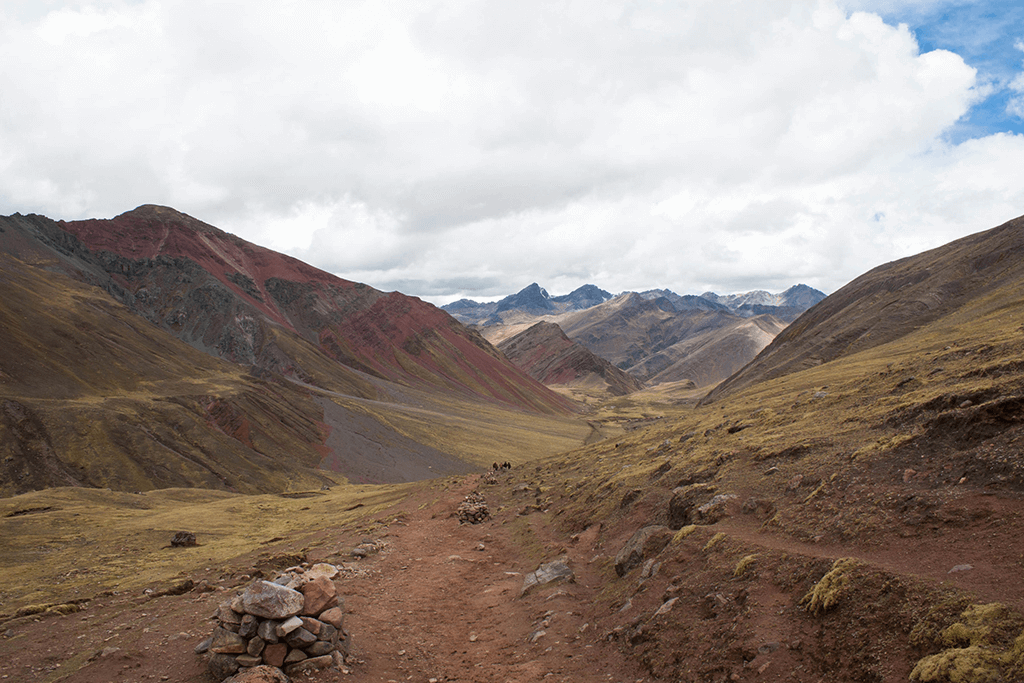

Traveling the trail, among the Rainbow Mountains we have the opportunity to admire surrealistic images that nature created for us. On the palette with diverse tint we can find golden yellow, intense turquoise, rust red or lavender. The perfection of the line and the symmetrical composition bring to mind the sea where the mountains ranges are rainbows waves. When you realize that the view isn’t a canvas, but reality, it is hard not to believe that they were created by God’s paintbrush. The saturation of hues stems from eroding sedimentary rocks. In cloudy days the colors are darker and more distinct. However, in the sunny weather, when the mountains are brighter, they seem more faded.
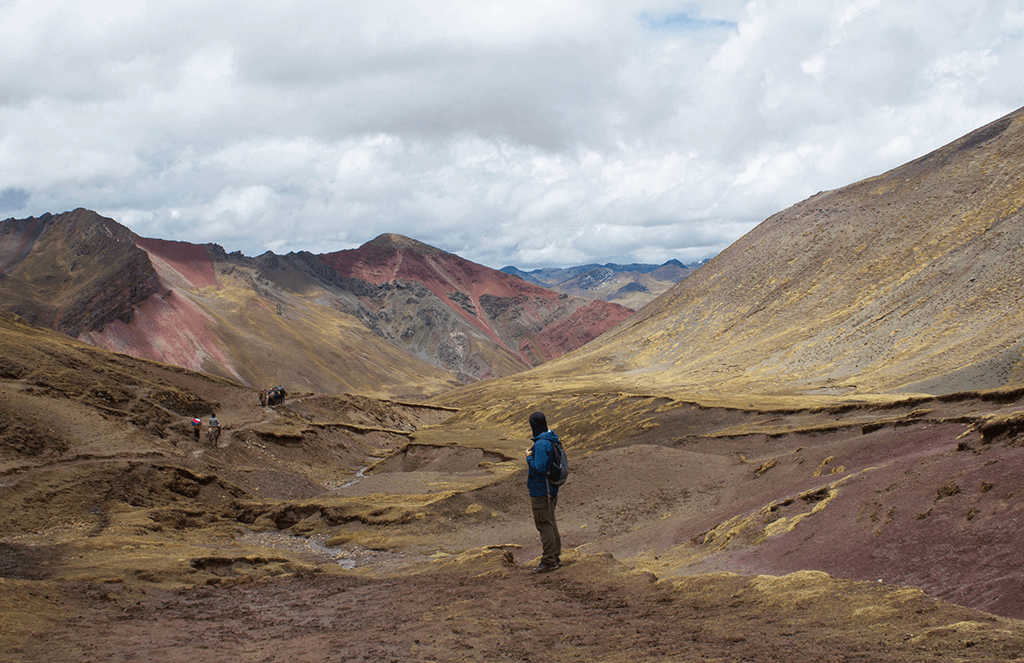
In the past the trails that surrounded the mountains were crossed by the Incas for spiritual purposes. During pilgrimages, they asked holy mountain of Ausangate “Apu” (6 384) for help to solve a problem, to bless their hopes or bring happiness. Apu means God of the Mountains. The Incas believed that under his rule there was wind, rain, snow and drought.
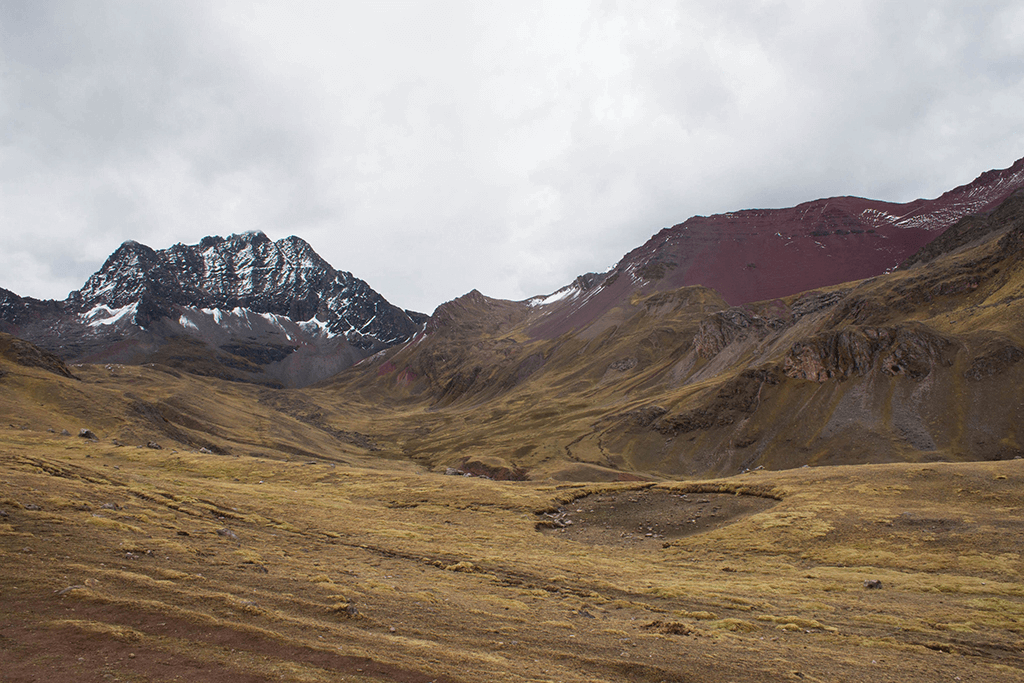
During the trekking we can experience each of the season. We see spring with beautiful mountain flowers, summer with clear blue sky, autumn welcome us with rain and winter with strong wind with snow. Just before the peak, Apu lets go, and he recompenses in the shape of weather and unearthly views. It is worth to endure trials of Apu and overcome our own weaknesses.
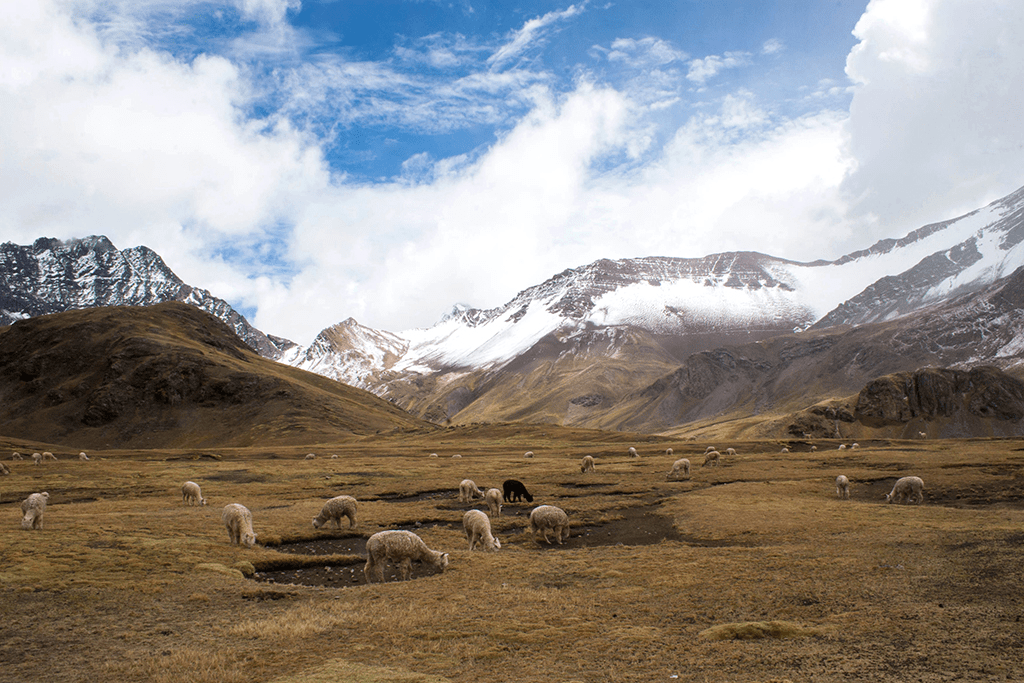
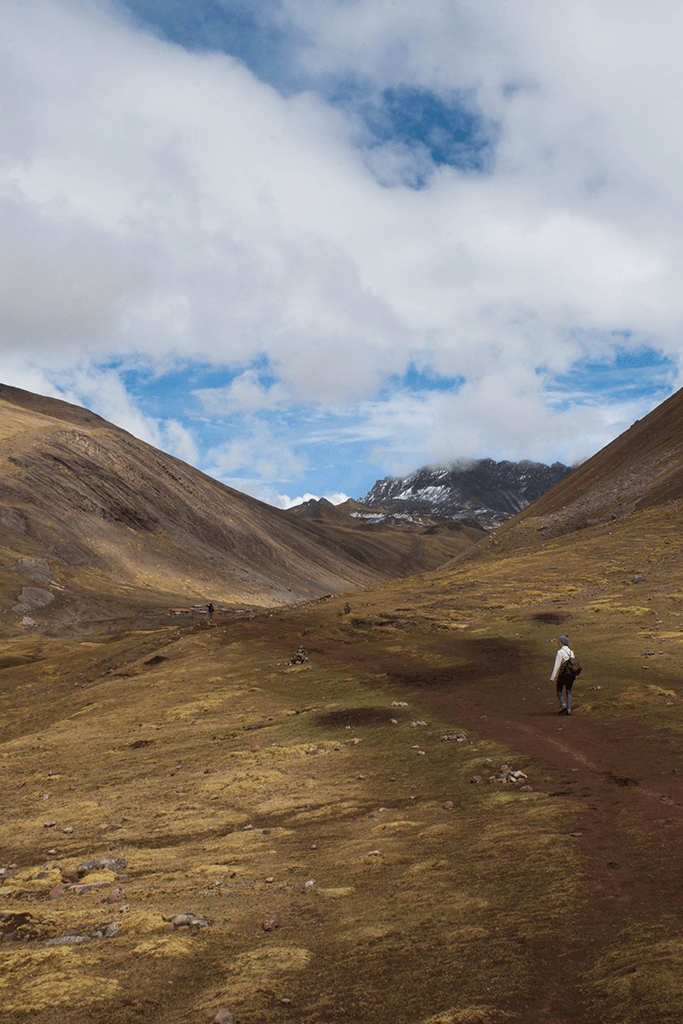
It is generally believed that everybody should have respect for the mountains. When the glaciers and snow from high peaks thaw, the rivers that transport water to the villages below are formed. Water is life, so mountains are its source.
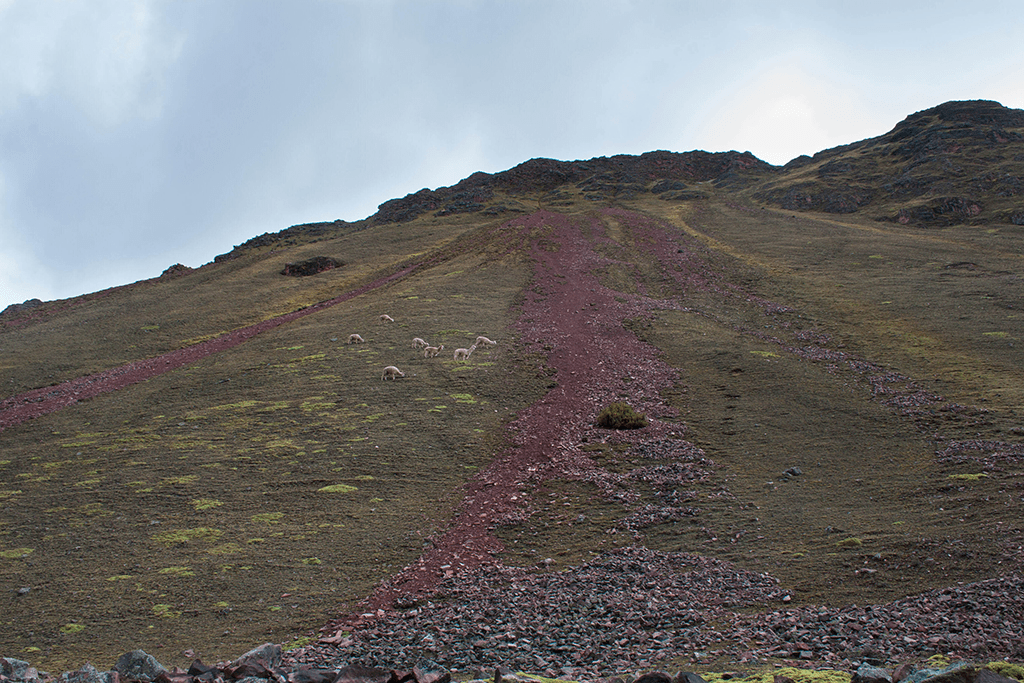
The population who live in the small villages we pass on the trail is one of the few pastoral communities that can still be found in the world. Leading the traditional way of life, they live primarily from breeding lam and alpacas. Because of the hard and harsh conditions of the highlands, the notion of “wasting” is not known. Each part of the animal will be used. The skin is ideal for shoes, from wool clothes will be made, meat will be consumed and excrement will be used as fuel and fertilizer. The folk live very frugally in houses built of stone with thatch on the roof. They don’t have electricity, sewage or running water.

Local people earn their livelihood through tourism that have been developing since 2016 – after the trail was open for travelers. Mainly they offer transportation by the horses and overnight stay. It is important to remember when you journey on your own that a small payment, when you want to pitch a tent on someone’s “property”, is extra cash infusion for its owner.
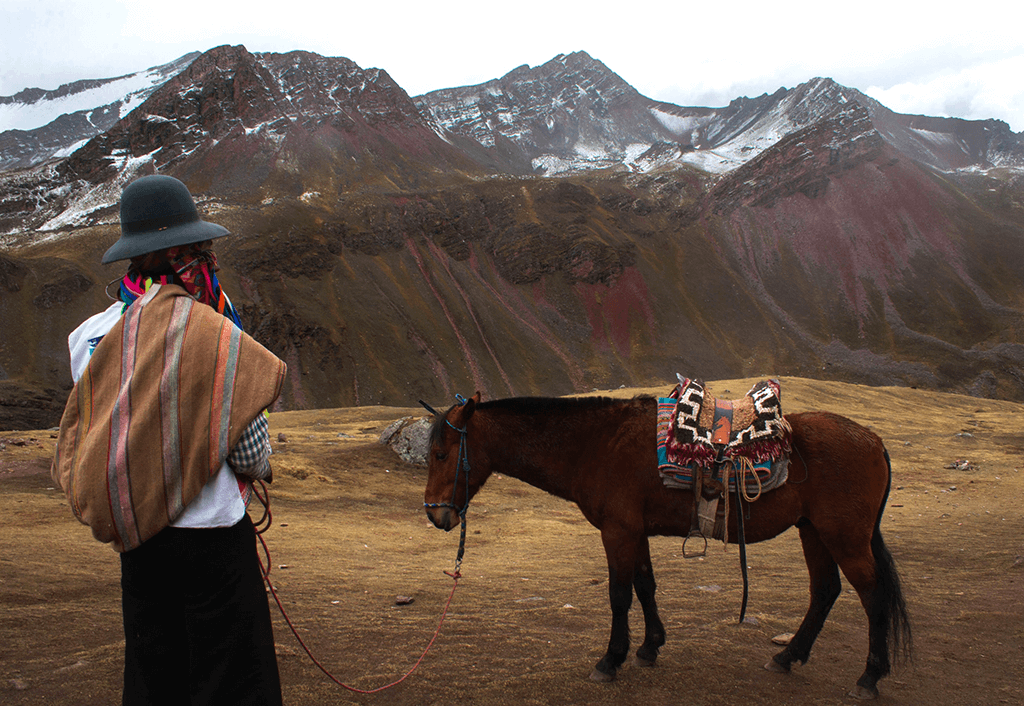
In high mountains live Q’eros – mythical Indians which culture was put on the UNESCO list as national heritage. Q’eros tribes live in isolation, far from city noise and civilization. They differ having their own customs, attire and culture. Reportedly the tribes people live even 110-115 years.
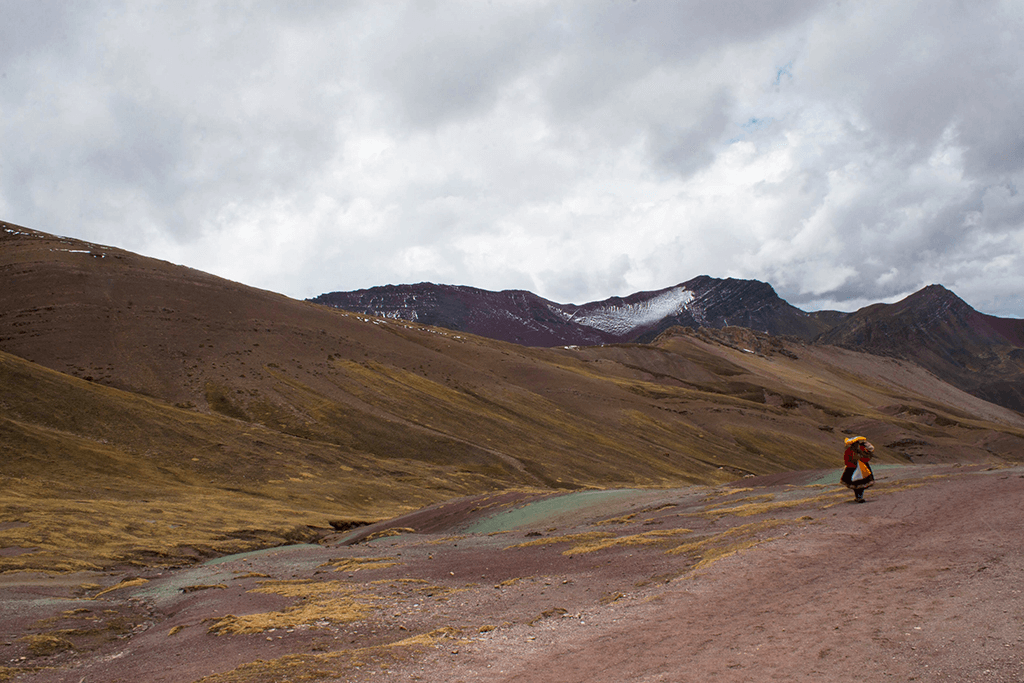
In recent years, migration of mountain communities to larger cities is visible. Mainly for the purpose of improving their material status, earnings, education. The migrants are mostly young. Attempts to assimilate with the population of larger cities are slowly wiping out old traditions and customs.
